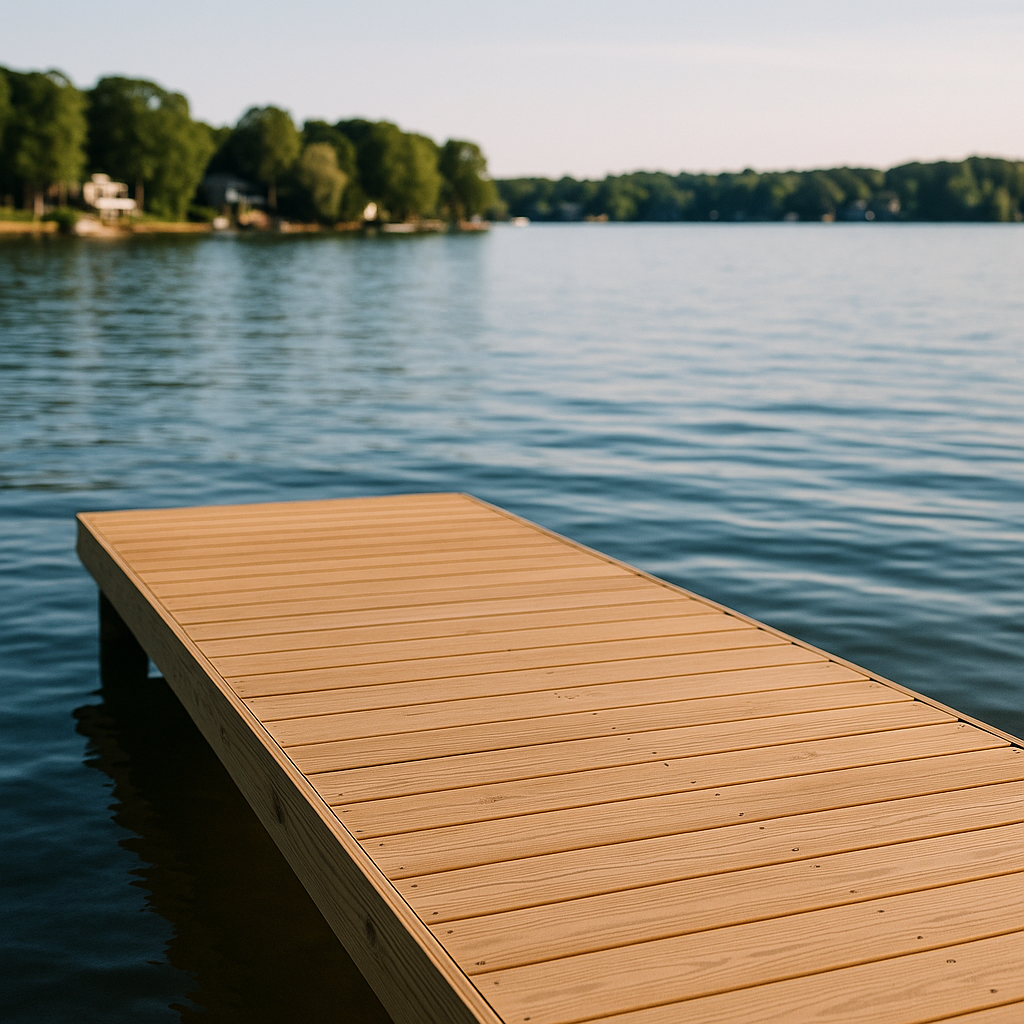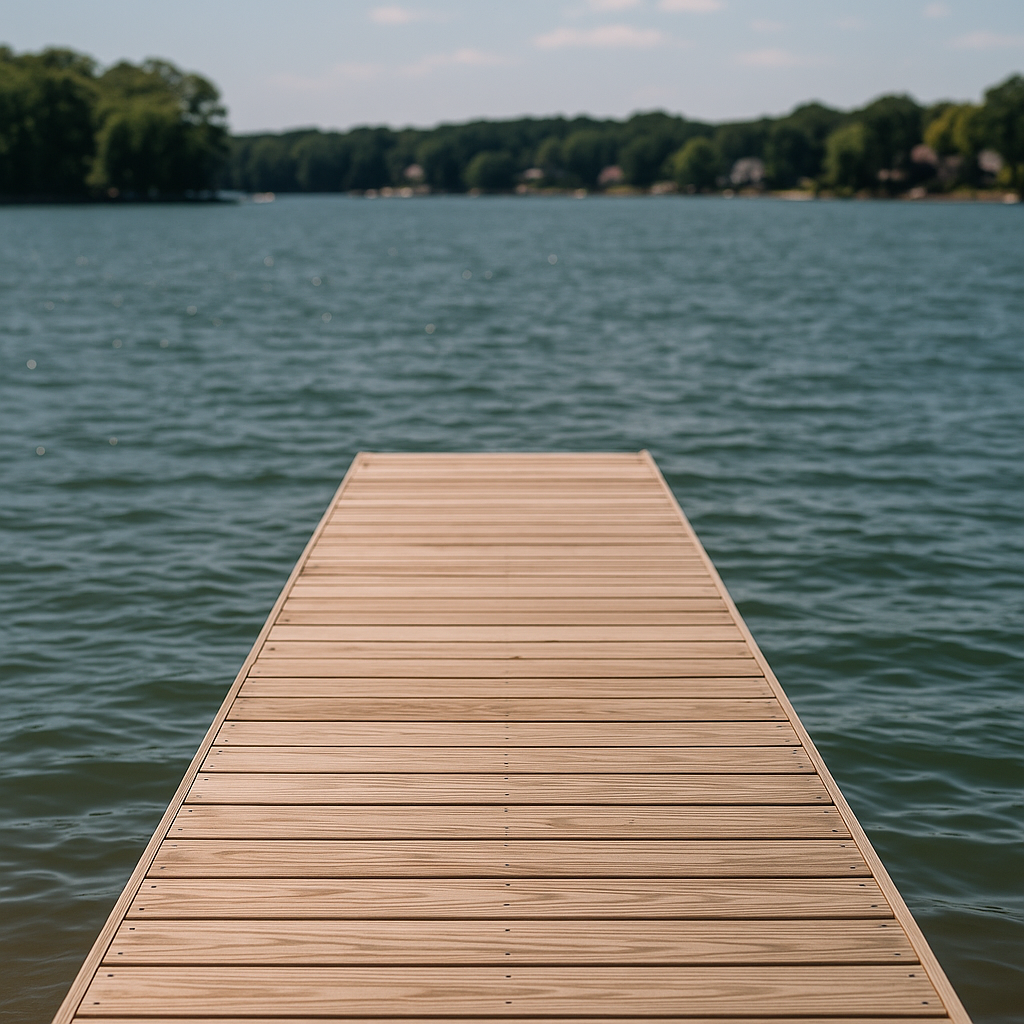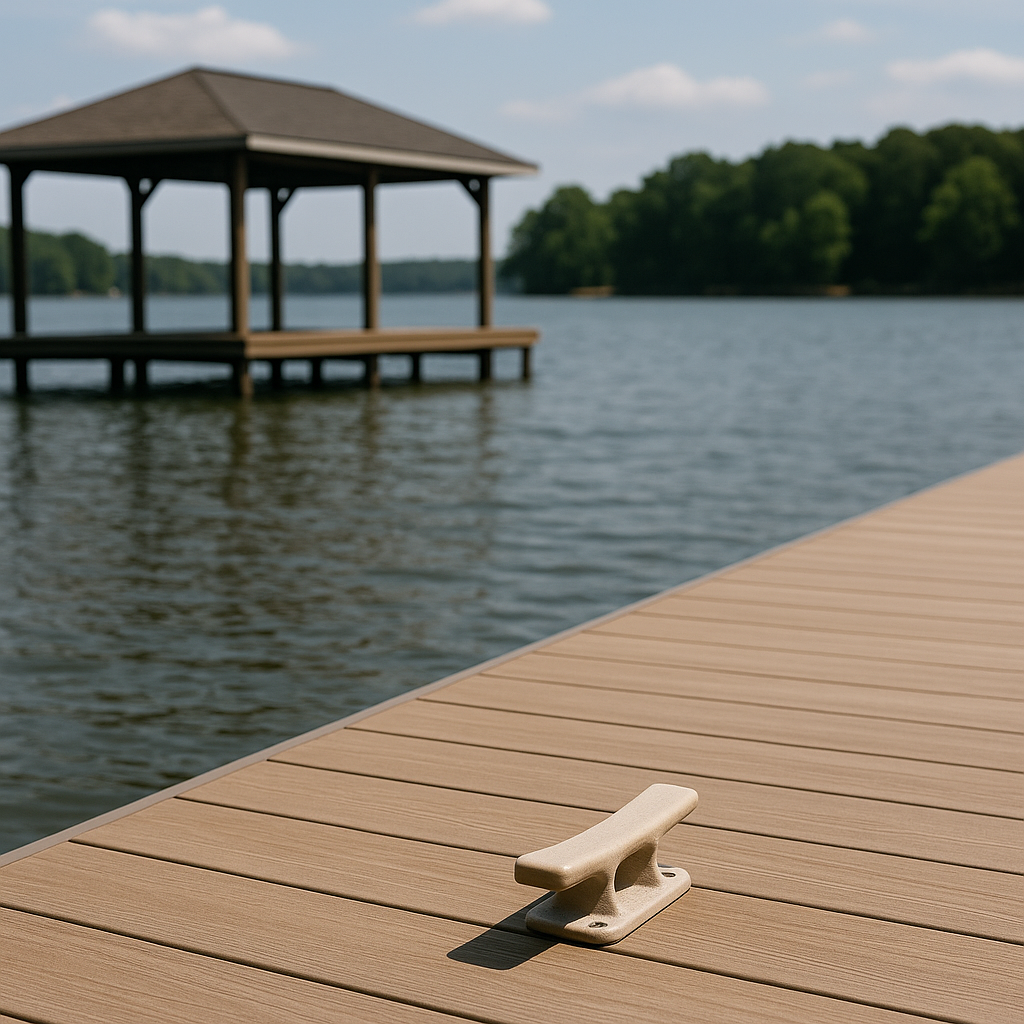What is the best dock material for Lake Norman?

When it comes to constructing a dock on Lake Norman, selecting the right material is crucial for durability, maintenance, and aesthetics. With a variety of options available, understanding the pros and cons of each material can help you make an informed decision. In this comprehensive guide, we will explore what is the best dock material for Lake Norman, considering factors such as weather resistance, longevity, cost, and local conditions.
Understanding Dock Materials
Choosing the best dock material for your needs involves evaluating several options. Here are the most common materials used in dock construction:
- Wood: Traditional and aesthetically pleasing, wood is often used for residential docks.
- Aluminum: A lightweight and corrosion-resistant option that requires little maintenance.
- Composite: Made from recycled materials, composite docks mimic the look of wood without the maintenance.
- Concrete: Known for its durability and stability, concrete is often used for commercial docks.
What is the best dock material for Lake Norman?
The best dock material for Lake Norman largely depends on your specific needs, preferences, and environmental factors. Let’s examine each material in more detail:
Wood Docks
Wood is a classic choice for dock construction and has been favored for its natural beauty. The most commonly used types include:
- Pressure-Treated Pine: Budget-friendly and resistant to rot and insects, pressure-treated pine is a popular choice. However, it can warp over time if not properly maintained.
- Cedar: Known for its natural resistance to decay and insects, cedar offers a rich color and aroma. It typically costs between $170 – $520+ per linear foot.
- Redwood: Similar to cedar, redwood is also resistant to decay but can be more expensive, costing between $220 – $650+ per linear foot.
While wood docks can be visually appealing, they require regular maintenance to prevent wear and tear due to exposure to water and UV rays. Regular sealing and staining are essential to prolong the life of a wood dock. In the context of Lake Norman, where humidity and sun exposure can be significant, the durability and maintenance of wood docks are vital considerations.
Aluminum Docks
Aluminum docks are lightweight, durable, and resistant to corrosion. They are an excellent option for those looking for low-maintenance solutions. Some advantages include:
- Corrosion resistance: Aluminum does not rust, making it ideal for water environments like Lake Norman.
- Longevity: With proper care, aluminum docks can last for decades.
- Lightweight: Easier to install and remove compared to heavier materials, aluminum docks are particularly useful for seasonal installations.
Costs for aluminum docks typically range from $140 – $430+ per linear foot, depending on the design and features. Many Lake Norman homeowners appreciate aluminum docks for their modern look and minimal upkeep, allowing more time for relaxation and enjoyment on the water.
Composite Docks
Composite materials, made from a combination of wood fibers and recycled plastic, are becoming increasingly popular due to their low maintenance and durability. Key benefits include:
- Low maintenance: No painting or staining is required, just an occasional cleaning with soap and water.
- Environmentally friendly: Many composites are made from recycled materials, making them a sustainable choice.
- Variety of colors and textures: Composite docks can mimic the appearance of wood without the downsides, offering more flexibility in design.
The cost for composite docks can vary widely, typically falling between $220 – $650+ per linear foot. Although the initial investment is higher, the long-term savings in maintenance make them a worthwhile consideration, especially for busy families or those who value their leisure time at Lake Norman.
Concrete Docks
Concrete is often used in commercial applications but can also be a viable choice for residential docks due to its strength and stability. Some features include:
- Durability: Concrete is extremely durable and can withstand heavy loads, making it suitable for larger vessels or heavy foot traffic.
- Low maintenance: Once installed, concrete requires minimal upkeep, making it an attractive option for those who want to spend more time enjoying the lake.
- Design flexibility: Concrete can be molded into various shapes and sizes, allowing for creative dock designs.
However, concrete docks can be quite expensive, typically costing between $290 – $860+ per linear foot. Additionally, installation can be more complex, requiring professional help. For homeowners near the more developed areas of Lake Norman, such as Mooresville or Cornelius, concrete docks can provide a robust and permanent solution that stands up to the rigors of lake life.
Factors to Consider When Choosing Dock Materials
Beyond the basic characteristics of materials, several factors should influence your decision:
- Climate and Weather: Lake Norman experiences a range of weather conditions, from hot summers to winter freezes. Ensure your chosen material can withstand the local climate, particularly the humidity and temperature fluctuations.
- Usage: Determine how you plan to use your dock—whether for recreational boating, fishing, or simply enjoying the view. Heavier usage may require more durable materials.
- Maintenance: Consider how much time and effort you want to dedicate to maintaining your dock. Some materials require more upkeep than others, which can be a significant factor for busy lakefront homeowners.
- Aesthetics: The look and feel of your dock can impact your property’s value and your personal enjoyment. Choose a material that complements your lakeside home and enhances the overall appeal of your property.
Local Insights: Docks on Lake Norman
When choosing a dock for Lake Norman, it’s also essential to be aware of local regulations and guidelines. The North Carolina Wildlife Resources Commission has specific rules regarding dock construction, including size limitations and environmental considerations. Ensuring compliance with these regulations is crucial to avoid fines and ensure the ecological balance of the lake is maintained.
Additionally, understanding the specific area of Lake Norman where your dock will be located can influence your choice of material. For instance, the northern parts of the lake, which are more wooded and secluded, might benefit from wooden docks that blend into the natural landscape. In contrast, areas near commercial developments may favor more modern materials like aluminum or composite for a sleek, contemporary look.
Conclusion: Making the Right Choice
Ultimately, the best dock material for Lake Norman depends on your specific needs, preferences, and budget. Each material has its advantages and drawbacks, making it essential to weigh these factors against your desired maintenance level and how you plan to use your dock.
For a stunning, low-maintenance dock that will last for years, you might consider aluminum or composite materials. On the other hand, if you value aesthetics and don’t mind performing regular maintenance, a wood dock could be your best bet. For maximum durability and stability, particularly if you have heavy traffic, concrete may be the ideal choice.
At Lakeshore Decks Construction, we are dedicated to helping you design and build the perfect dock for your needs. Our team of experienced professionals can guide you through the various options, ensuring you make the best choice for your Lake Norman property.
Frequently Asked Questions (FAQs)
1. How long do different dock materials last?
Wood docks can last 10-20 years with proper maintenance, aluminum docks can last 20-30 years, composite docks can exceed 25 years, and concrete docks can last 50 years or more, depending on installation quality and environmental factors.
2. Are there regulations for dock construction on Lake Norman?
Yes, the North Carolina Wildlife Resources Commission has guidelines regarding size, materials, and environmental protection. Always check local regulations before construction.
3. How can I ensure my dock lasts longer?
Regular maintenance, such as cleaning, sealing, and inspections, can significantly extend the life of your dock. For wooden docks, apply sealants and stains regularly to protect against moisture and UV damage.



